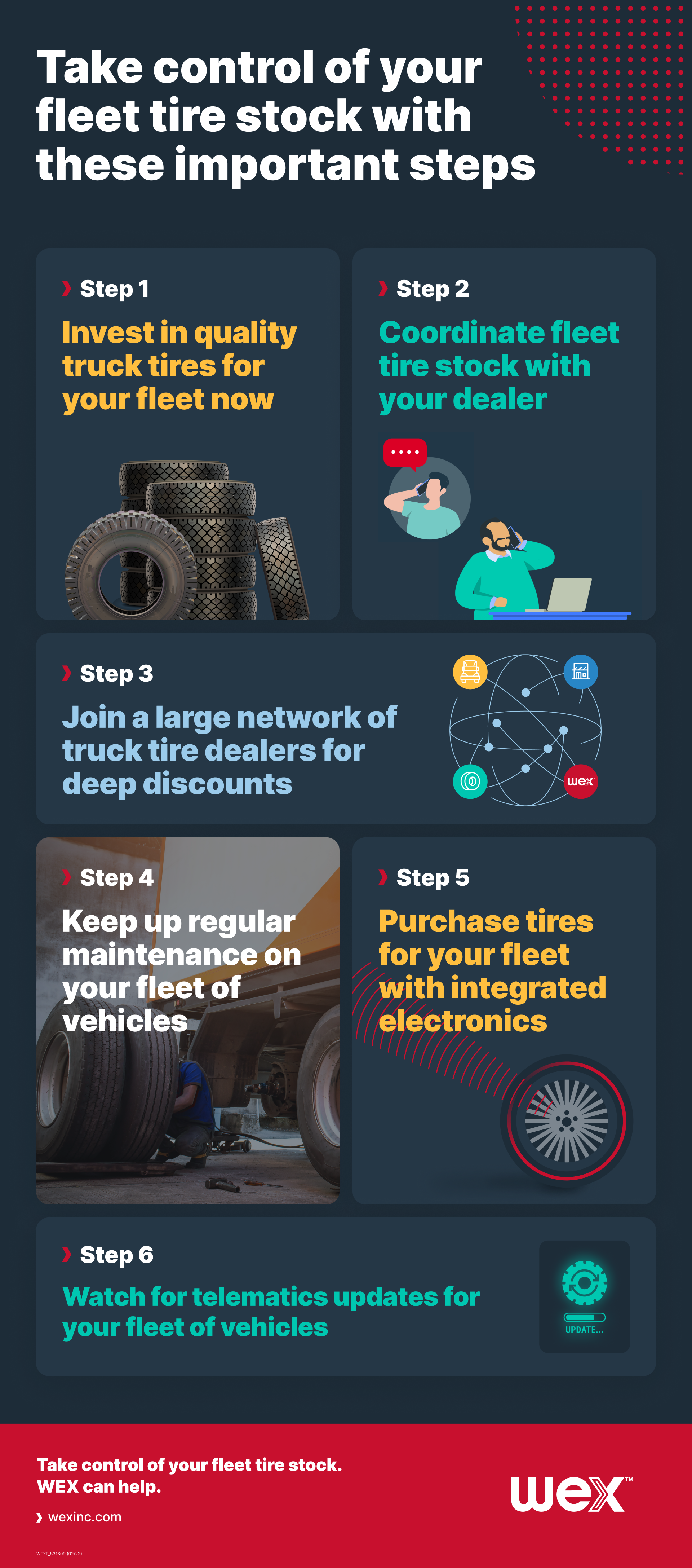Stay connected
Subscribe to our Inside WEX blog and follow us on social media for the insider view on everything WEX, from payments innovation to what it means to be a WEXer.

Fleets are not immune to the modern challenges businesses face. Fleet managers must navigate things like inflation, high volatility in fuel costs, and fluctuating interest rates. This has put business leaders on defense.
Fleet business owners and managers are under pressure. They need to find ways to save on necessary operational costs. Understanding the complexities and considering creative ways to manage your fleet can help. The goal is improving your bottom line and keeping your drivers moving, moving, moving.
Tthe American Trucking Association noted a slight drop in the cost of parts and labor in the second quarter of 2023. This provided some much-needed relief. But how have prices been in 2024? And what’s 2025 looking like? It’s important to get ready for future fluctuations and find cost savings to prepare for the ever-looming possibility of downturns.
Before understanding what’s driving challenges for fleet owners across America and beyond there are some basics to grasp. It’s important to understand the types of operational costs pertinent to fleet management. It’s good to know what is and is not mandatory, and which fleet expenses managers can more easily control.
These remain constant regardless of how long fleet vehicles are driven. Fixed costs are typically easier to budget for as they’re more predictable. Examples include:
These fluctuate depending on how long vehicles are driven and can be split into two categories: mandatory and non-mandatory variable costs. Effective management of these costs can lead to significant savings. Examples include:
Mandatory variable costs:
Non-mandatory variable costs:
Labor shortages, global supply chain issues, and more are still persistent challenges for any fleet operation; but why? And how can fleet managers reduce total cost by effectively managing these challenges?
The labor shortage continues to be a problem across the U.S., with unemployment little changed at 3.9 in April 2024. The transportation sector in particular has one of the highest unemployment rates among industries tracked by the Bureau of Labor Statistics (BLS) at 4.4%, which makes sense considering labor shortages and talent retention are listed as the third-largest threat to businesses in 2024.
Labor shortages impact fleet costs in several ways, including:
While experts predicted supply chains would normalize in 2023, parts and labor were up nearly 2% in the third quarter of the year. Luckily, the cost of parts has decreased by a total of 2.2% since 2022; however, it’s evened out by the subsequent rise in labor costs, which have hiked 4% in the same period. For this reason, the cost of parts remains a challenge for fleet owners, but hopefully, the trend will continue throughout 2024 and parts costs continue to scale downward.
44% of physical operations leaders — which includes fleet owners and managers — say that fraud has a large financial impact on their business. However, the same percentage of leaders are unsure how much revenue is lost to fraudulent activity; for larger fleets, it’s estimated around 19%, and for smaller fleets, 16%.
What is the solution to this fraud problem? Technology — and specifically AI-enabled tools. However, readily available tech that can provide greater visibility into operations, such as fleet cards and telematics, prove incredibly valuable for recognizing and mitigating fraud risk.
Shifting from owning to leasing vehicles is one way to minimize overhead and repair and maintenance costs for your trucking company. Here’s how:
While supply chain disruptions have stabilized over the last few years, continued challenges in fleet vehicle acquisition remain a pain point for many fleet managers. In the U.S., the average age of cars and light trucks increased by a staggering three months in 2023, to a new record of 12.5 years.
With fleet vehicles staying on the road for longer, preventive maintenance is a major key for ensuring long and cost-effective service lives — catching and addressing minor issues before they snowball into major problems.
In the long run, preventive maintenance aims to reduce downtime, improve safety, and extend vehicle lifespan. Here’s what it generally entails:
Utilizing fleet management software or telematics systems to track and remind you of maintenance schedules and monitor vehicles can streamline the entire process.
The most technically advanced fuel cards give you powerful tools to reduce your spending — regardless of your fleet size. For example, WEX fleet management solutions provide automatic fuel consumption tracking, enhanced security, and detailed reporting.
Here are just a few of the ways a feature-rich fuel card can reduce not only your fuel cost but other fleet costs, too:
Instead of dictating changes from upper management, involve employees and contractors in organizational changes by cultivating a collaborative work environment. When your employees are engaged in the decision-making process, they are more likely to accept and embrace the changes that are best for your business. They are also more likely to remain loyal to you, helping reduce attrition for your trucking business.
Educate your employees about your vision for the future of your fleet. Why is your business different? What sets you apart from other fleet companies? Why should a driver or technician work for you over another trucking business? By instilling a sense of purpose in your company’s mission and vision, you will attract and retain the best employees.
Nothing is perfect, but committing to continued improvement can get you close — and one of the greatest commitments a fleet manager can make for their business and drivers. Here are a few ways to prepare for and overcome challenges by taking a vow of improvement:
WEX is committed to helping fleet managers take control of their operations by providing greater visibility into their operations, managing costs, and improving driver safety. To learn more about WEX, please visit our About WEX page.
All fleet cards are not the same, and different types of fuel cards suit the needs of different kinds and sizes of businesses. View WEX’s fleet card comparison chart to see which fleet fuel card is right for you.
Editorial note: This article was originally published on November 2, 2022, and has been updated for this publication.
And check out our infographic below for five steps on taking control of your fleet tire stock.

Resources:
American Trucking Association
Bureau of Labor Statistics
Go Motive
Trucker Parts and Service
SP Global
Subscribe to our Inside WEX blog and follow us on social media for the insider view on everything WEX, from payments innovation to what it means to be a WEXer.